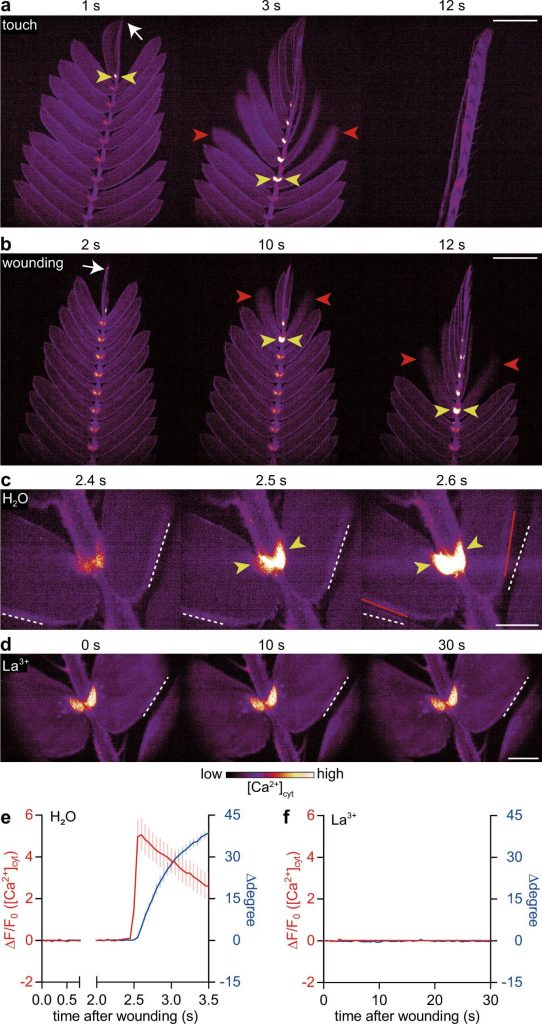In a new study, scientists have found out which signals are transmitted over long distances and lead to
Mimosa pudica, also known as mimosabashful is a perennial herbaceous plant, a species of plants from the genus Mimosa of the Legume family, originating from the tropical regions of South America and cultivated all over the world as an ornamental plant. The plant is called so because its leaves fold after someone’s touch, as if embarrassed.
Plants do not have nerves and muscles that allowanimals move quickly. However, Mimosa pudica succeeds. Since the time of Charles Darwin, scientists have been actively studying this spectacular movement of leaves. However, the long-range signaling molecules that trigger rapid leaf movements and the physiological role of this movement remain unexplored.
 Courtesy: Nature Communications (2022). DOI: 10.1038/s41467-022-34106-х
Courtesy: Nature Communications (2022). DOI: 10.1038/s41467-022-34106-х
As part of the experiment, scientists created a transgenicfluorescent and “stationary” Mimosa pudica and filmed the plant’s reaction on video. The footage shows that bursts of fluorescence quickly spread across the leaves and cause leaf movements. Fluorescent light also monitors cytosolic calcium in real time.
It turned out that Mimosa pudica closes its leaves just 0.1 seconds after Ca2+ signals enter the “motor organ” pulvini.
For the study, scientists developed a systemsimultaneous recording of cytosolic Ca2+ and electrical signals to reveal the spatiotemporal relationships between these signals. It turned out that when the sheet is damaged, Ca2+ and electrical signals systematically propagate at the same speed and pass through the registration “point” at the same time. Thus, in Mimosa pudica, long-range Ca2+ and electrical signals turned out to be spatiotemporally connected.
Read more:
Named the consequences of a gas leak from the "Nord Stream"
A massive impact from a space object triggered the Earth's magnetic field
Named the main danger of snoring: scientists told how it affects the brain